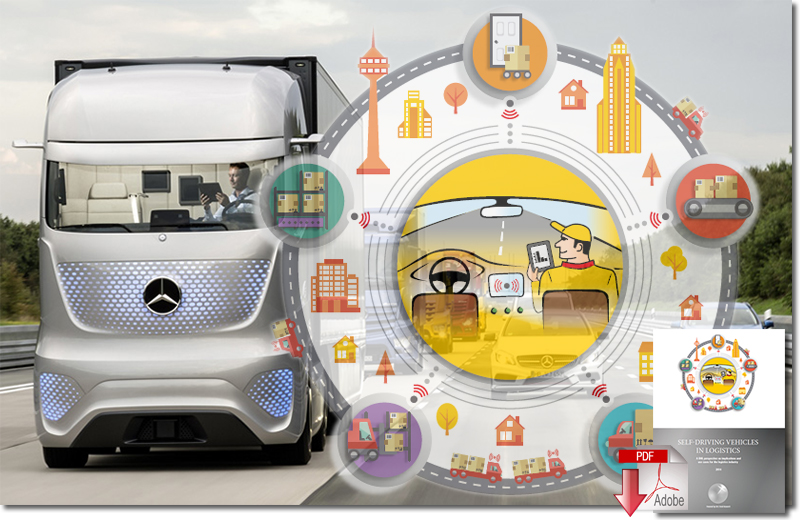While Google plans to someday unleash driverless cars on public streets, the logistics industry will probably be one of the first training grounds for such automated vehicles.
Shipping companies will probably adopt the technology faster than other industries as moving cargo in non-public areas like storage facilities and warehouses offers a way to test such devices with less risk to human life, according to a study published by DHL, the freight and express arm of Deutsche Post AG.
Eventually vehicles might bring packages to a pick-up station where a consumer could find them, the shipper said.
DHL plans to “maintain pole position in the world of self-driving vehicles,” wrote Matthias Heutger and Markus Kueckelhaus, the authors of the study. “The question is no longer ‘if’ but rather ‘when’ autonomous vehicles will drive onto our streets and highways.”
A boom in electronic commerce is making it harder for delivery companies from DHL to United Parcel Service Inc. (UPS) to satisfy consumers who expect first-attempt delivery even though they’re not home during daytime hours.
With online retailers including Amazon.com and Google developing drones to push into the delivery business, companies are contemplating new solutions, such as making deliveries to the trunk of a customer’s parked car.
Seeing Eyes
Warehouses have been using robots and automated pallet movers for decades, however, the systems typically stop when they encounter obstacles to ensure safety, the study said. The robots will in the future deploy vision-guidance technologies including depth cameras and lasers to improve efficiency, and include more steps of the shipping process.
Robots will also increasingly be used outdoors at shipyards, ports and airports to automatize movement of pallets and swap containers, the study said.
On roads, existing driver assistance systems will be enhanced to ensure vehicles stay in their lanes, obey speed limits and eventually automate functions like overtaking and leaving a highway, while semi-automatic trucks will develop from being able to drive parts of a journey themselves before driverless trucks become reality, the study said.
Automation will improve road safety and fuel efficiency and increase the economics of the logistics chain, the study said.
Komatsu Ltd. is already developing driverless dump trucks and Caterpillar Inc. deploys driverless hauling vehicles to improve productivity in mines for BHP Billiton Plc. Further out, the DHL study envisaged more “futuristic” solutions such as self-driving parcels that may one day arrive through small gates in consumers’ doors, similar to a cat flap.
Deutsche Post started a pilot project of sending urgent goods to the island of Juist in Germany’s Wadden Sea, beating Amazon and Google to offer the first scheduled parcel delivery service with drones this year. The company has said it will take time before such services become a widespread possibility.
Source: Bloomberg
Related: Why Trucks Will Drive Themselves Before Cars Do

Article topics
Email Sign Up


















